The
above advertising/sponsorship is selected by Angelfire.com and
may not represent my views.
|

|
|
Motor Development |
|
movement
control, dexterity, flexibility
ability, creativity, exploration, understanding
motor skills
|
|
3 Types of Motor
Skills |
Why Focus on Motor
Skills? |
|
motor skill development increases:
- ability to move in variety of ways
- ability to control one's body
- ability to think, problem solve
- ability to assess and plan
- and one's self-esteem
|
|
How Does Motor
Development Affect Self-Esteem? |
|
Motor development is the most visible
of innate abilities.
It is seen by others, judged by others.
It is acknowledged, compared to, commended and shamed. We,
being highly conscious of our motor skills--our potential and
abilities-- are greatly influenced by them. Our language betrays our
need for motor excellence. From birth, we judge the development of
a child by whether he is rolling over yet, sitting up, using the
toilet. We assess a child by what he can DO: "Look at what
you have done!" "I knew you could do it. You are such a
big boy." "You did it just like me. Good for you."
It is through successes at "doing" that children receive
recognition. And even if the words aren't said, it is easy to
see for yourself that you are not first in a race, that another person can climb
higher, that they can do what you cannot.
But what if they can't "DO" like someone else? What if
the natural ability isn't there, or the skill hasn't been
developed? How does this child feel? How is he seen by
others in his world? What kind of feedback does he receive? Our initial
perception of self is an interpretation of how we think others perceive
us. So what can we do, to enhance the self-esteem?
We can:
- provide more acknowledgement to effort
- help the child build self-rewards
- focus on all aspects of development
- help build the motor skills
- use their strengths to enrich their
development
|

|
|
|
Enhancing Motor
Development |
With any skill, to develop it, one needs to explore it, to experience
it, to practise it. Every single thing children do is building
their understanding and their abilities. From day one, we need to
be providing as many experiences and as much freedom as we can to provide
children with the opportunities to manipulate their muscles, to find the
limits, to increase the ability, to determine what movement the
situation calls for and how to make it happen.
Consider the following:
A young child walks towards a ball, with the desire to pick it
up. She leans over to touch the ball, but, instead, her foot
hits it and the ball goes sailing across the room. She walks
towards it again, and this time tries to kick the ball on purpose,
but misses and her foot goes past the left side of the ball.
She tries again, and again. She kicks it and she begins to run after the ball,
tries to stop in front of it, and falls forward. She stands up and
kicks it to a new location and she giggles.
What has occurred within this child? How has
she grown, developed, changed?
She has learned:
- that feet have to be watched, not just hands
- if you hit something, with your foot, it moves
- you have to aim at the ball, not just swing your leg
- don't give up
- don't run too fast when you go after a ball
- slow down before trying to stop
- start stopping at a certain distance, depending on the
speed you are moving
- how to assess speed, distance, force
- connections between "cause and effect"
- you can do it if you keep trying
|
All
she did was kick a ball!! ?? |
|
|
|
Movement involves judgment. One must assess the
situation and one's ability (speed, power, etc) and make the appropriate
movement. How hard should I throw? How fast should I
run? How much effort do I need to jump that high? When
should I start to stop? Just imagine the multitude of situations in a
child's lifetime when they will have to use these skills. But the
problem solving is not just at this surface level. These are all
examples of decision-making that is needed in school, and social
life.
"What will happen if...?" "Should I...?
It
is through movement that the ability to problem solve first
develops. Therefore, let the children crawl on the floor, climb
onto the couch, squeeze into tight locations and out again (up to safety
limit of course). Let them: climb trees, run the vacuum cleaner, peddle
a bicycle, and slide down a hill. Motor develop builds more than just
their muscles. It builds their future!Some tips:
(acknowledgement to Dr. Mel Levine, Professor of Pediatrics at
University of NC School of Medicine for many of these tips)
do not coerce or force children with gross motor
dysfunctions to participate in competitive sports follow the child's lead: find one sport at which
the child can succeed, keeping in mind their abilities remember that succeed does not mean win while developing initial skills, provide the 1:1
assistance find a form of artistic
/ musical expression that
provides a sense of satisfaction. Very therapeutic. do not ridicule at being clumsy help children see motor activities as forms of
entertainment and gratification rather than emblems of overall
competency use technology to assist motor mastery provide balance of activities, exposing child to
many experiences recognize and allow differences between
siblings/friends; do not compare help children develop ability to praise others'
accomplishments without feeling degraded be sensitive to insecurities, being aware of why
a child is hesitant be fair to all children: encourage patience,
understanding, teamwork, and acknowledgment to all use non-competitive, repetitive exercises and
activities to enhance motor development when planning an event, remember the roles of
"reporters" and "managers" and
"promotions" etc the arts (including music, woodworking,
painting) can develop motor skills while providing a sense of
accomplishment to children
develop fine motor, graphomotor, and gross
motor skills
|
|
A bit about Graphomotor Graphomotor
is similar to fine motor skills but focuses on writing skills.
Skills needed to use scissors or a needle are much different than the
control needed to use a writing tool.
Graphomotor skills not only involve the flexibility of the finger
muscles but, also, the ability to keep up with the flow of ideas.
How frustrating it must be to not be able to write down what you are
thinking.
Writing that is laborious, possibly illegible, and poor content can be
very frustrating, which in turn affects the
self-esteem and the desire to even try.
|
|
What
are some activities to do??
|
- "math circuits": answer question to determine the number
of
repetitions
- "run across the city/province": how many laps do you
have to do?
- "statues": how long can you hold a pose? (great motor
control development)
- march to different rhythms, beats, dynamics
- create large murals (large muscles) and mini-pictures (small
muscles)
- play team challenges where all must succeed to meet the
challenge... ex. fit everyone onto a 2' square board.. the
"brains" may be the ones to figure out "how" to
do it.
- create a new sport -- making the rules, the equipment,
coordinating, managing, advertising etc.
|
|
Back to
"Today's Child"
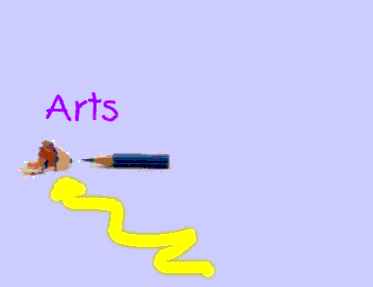
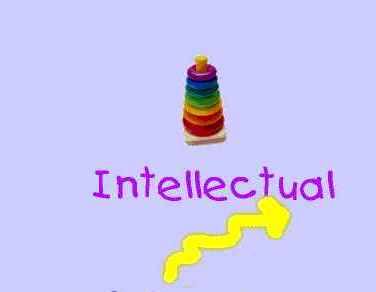
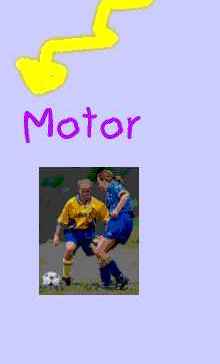
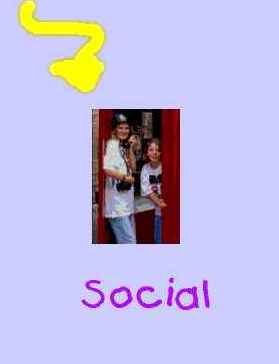
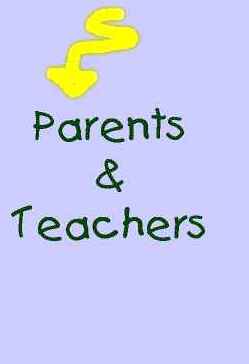
copyright, 1999: Debbie Roswell
|
|
|
|